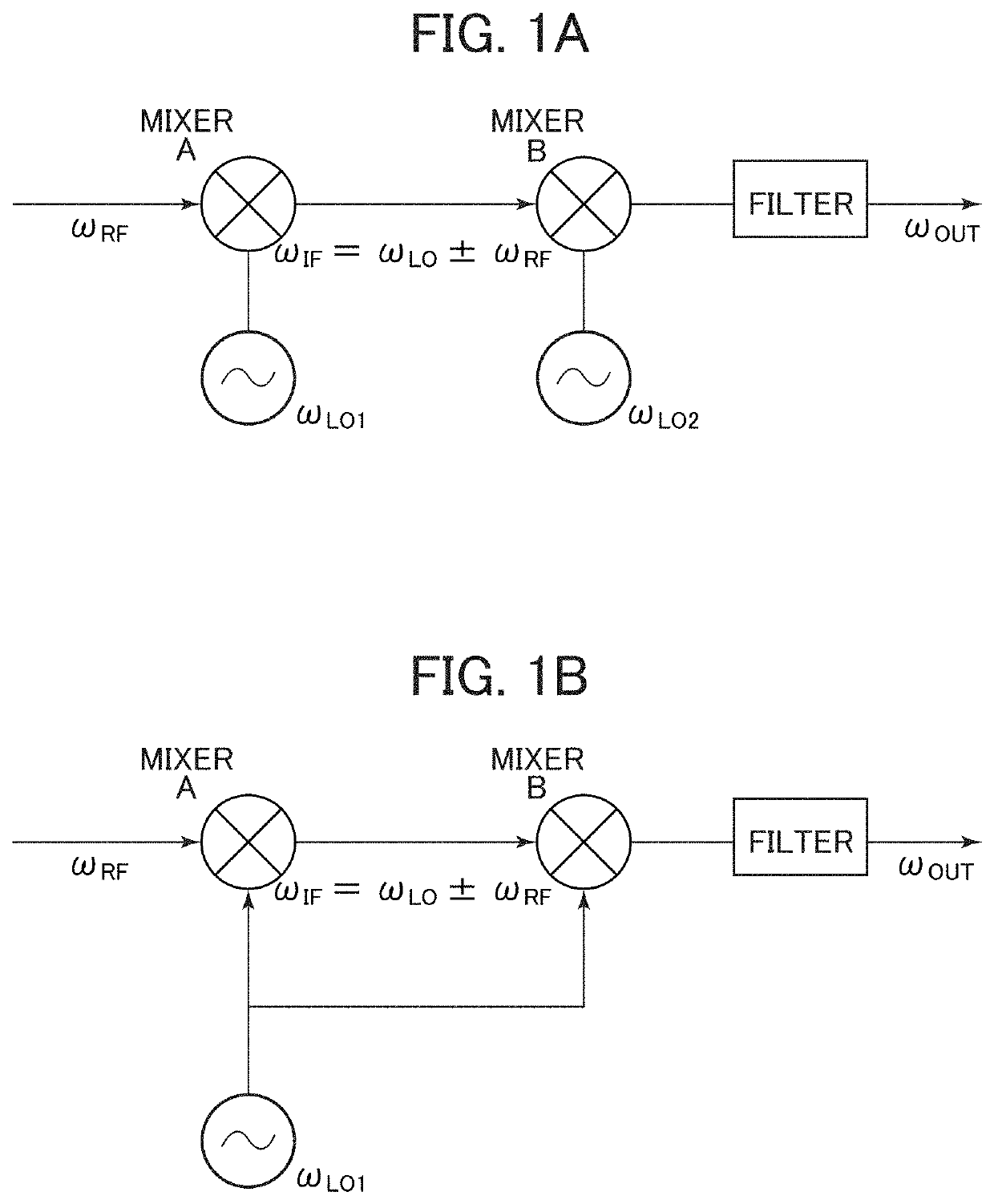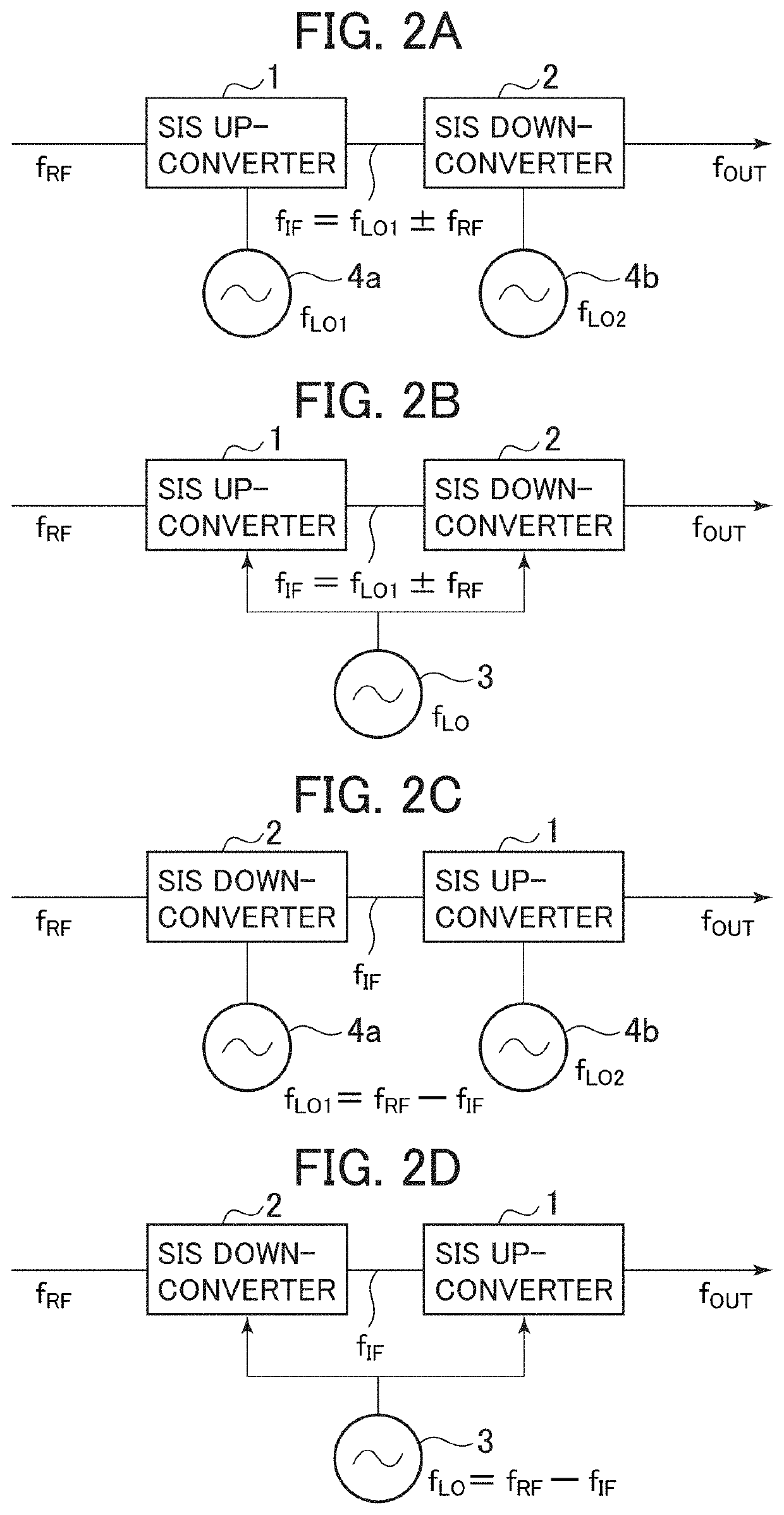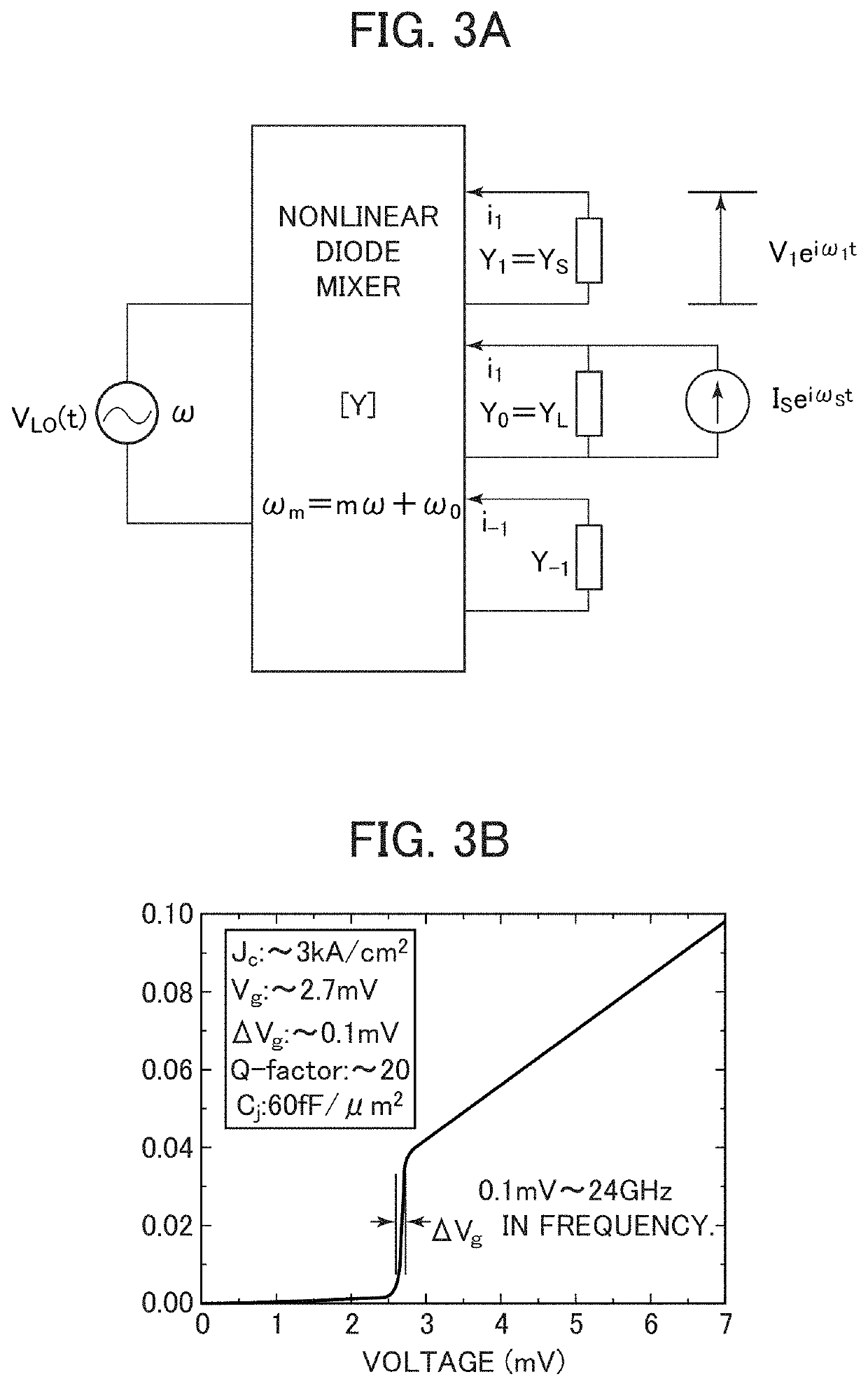Low-noise microwave amplifier utilizing superconductor-insulator-superconductor junction
a microwave amplifier and superconductor technology, applied in the direction of dissimilar material junction devices, superconductor devices, basic electric elements, etc., can solve the problems of low power consumption of the device itself, the inability to achieve related-art amplifiers, and the limitation of the number of amplifiers capable of being mounted to cryogenic stages. , to achieve the effect of reducing the heat load on the refrigerator and reducing power consumption
- Summary
- Abstract
- Description
- Claims
- Application Information
AI Technical Summary
Benefits of technology
Problems solved by technology
Method used
Image
Examples
example 1
[0058]FIGS. 2A to 2D illustrate basic exemplary configurations of the present invention. Of FIGS. 2A to 2D, FIG. 2A illustrates an example in which one frequency up-converter and one frequency down-converter are connected in series (i.e., in tandem or in cascade) and are operated as an amplifier. An up-converter 1 and a down-converter 2 are each a quasiparticle mixer utilizing a superconductor-insulator-superconductor (SIS) junction. At temperature not more than the temperature at which the SIS operates as a superconducting element, each of the SIS quasiparticle mixers operates as a double side band (DSB) mixer for a local oscillation frequency signal at a frequency not less than the gap frequency, which is a frequency equivalent (eΔVg / h: e denotes the elementary charge, and h denotes the Plank's constant) of a gap voltage width (ΔVg). In the configuration illustrated in FIG. 2A, an input signal having a frequency fRF is frequency-converted to fIF (=fLO±fRF) with a gain GUP using th...
example 2
[0074]FIG. 5A is a block diagram of a low-noise microwave amplifier fabricated as a prototype for experimental evaluation of a gain. SIS mixers used as the up-converter 1 and the down-converter 2 are the same as the converters designed in a 100-GHz band. For the purpose of suppressing interference in a circuit, an attenuator 8 is inserted between the up-converter 1 and the down-converter 2.
[0075]The attenuator 8 operates as an isolator. In other words, characteristics required for the isolator used in the present invention are to suppress a signal propagating from the second quasiparticle mixer to the first quasiparticle mixer. A directional coupler or a microwave isolator, for example, may also be used instead of the attenuator.
[0076]FIG. 5B depicts frequency dependency of the gain. Despite the above-described attenuator is arranged, a gain of about 3 dB is obtained in a 5-GHz band when the LO frequency is about 92 GHz. Since an attenuation of the attenuator at that frequency is ab...
example 3
[0078]As described above in relation to FIG. 1A, it is also possible to perform frequency conversion while the input signal is amplified, by using signals having different frequencies as the local oscillation signals for the up-converter and the down-converter. On that occasion, introducing a plurality of local oscillation signals into the quasiparticle mixers from external signal sources, respectively, means that external heats are also introduced together into a cryogenic region. Therefore, oscillation elements each having a similar structure to that of the SIS is desirably formed on the same substrate on which the above-described converters are formed. As such an oscillation element, there is Josephson oscillator using a Josephson current. It is known that thermal noise from an oscillation element under cryogenic environments is very low. Thus, a noise figure in the amplifier of the present invention can be easily improved by using that type of oscillation element. The above poin...
PUM
 Login to View More
Login to View More Abstract
Description
Claims
Application Information
 Login to View More
Login to View More - R&D
- Intellectual Property
- Life Sciences
- Materials
- Tech Scout
- Unparalleled Data Quality
- Higher Quality Content
- 60% Fewer Hallucinations
Browse by: Latest US Patents, China's latest patents, Technical Efficacy Thesaurus, Application Domain, Technology Topic, Popular Technical Reports.
© 2025 PatSnap. All rights reserved.Legal|Privacy policy|Modern Slavery Act Transparency Statement|Sitemap|About US| Contact US: help@patsnap.com



